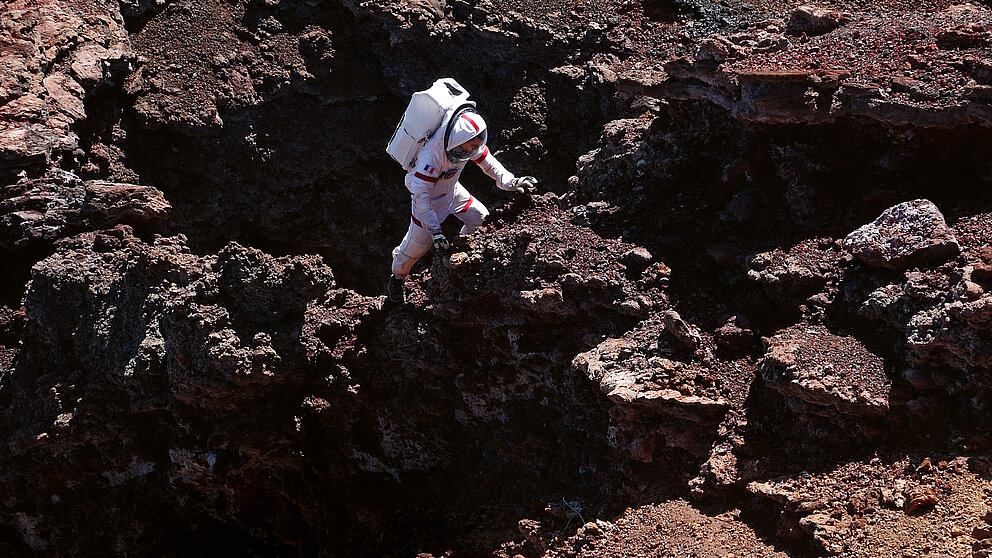Jump to the content
- {{#headlines}}
- {{title}} {{/headlines}}
At first glance, Cyprien Verseux could be experimenting in the art of cookery. Atmos, short for Atmosphere Tester for Mars-bound Organic Systems, is the name of the metal cube on the lab bench. It is about a cubic metre in size and has nine glass vessels sticking out the top with tubes leading from their lids to gas bottles. If you look into the vessels that hold about a litre, you see a transparent, greenish liquid.

CYPRIEN VERSEUX
French astrobiologist Dr Cyprien Verseux is currently conducting research as a Humboldt Research Fellow at the Center of Applied Space Technology and Microgravity (ZARM) at the University of Bremen.
On Twitter, he tells his more than 12,000 followers about his research. He has blogged and written books about the time he spent on a Mars simulation on Hawaii and at a research station in the Antarctic.
Cyprien Verseux is not a cook, but an astrobiologist. He is not working on futuristic dishes, but on experiments in space travel. At the Center of Applied Space Technology and Microgravity (ZARM) at the University of Bremen, the French scientist is preparing the manned missions to Mars that space agencies like NASA want to carry out in 15 to 20 years’ time. This is not another space race on the recent pattern of multi-billionaires like Jeff Bezos, Richard Branson or Elon Musk. Rather, the major space agencies’ Mars missions are about basic research: they are designed to determine once and for all whether there really is life on Mars – even if it is only microbes deep in the ground – as well as to learn more about the evolutionary history of the solar system and life on Earth.
This is what Humboldt Research Fellow Verseux is also working on in Bremen. If his project is successful, it would make it much easier to provide the astronauts with supplies during their mission, including, but by no means limited to, food.
Where to get the air to breathe?
Apart from nutrients, we are also talking medicinal drugs, fuel and, most important of all, air to breathe. Atmos, the metal box in Verseux’ lab, is an atmosphere-controlled vacuum photobioreactor. Swimming around in the liquid are tiny green bacteria which could possibly provide the ingredients. Verseux is exploring how these microorganisms could breed best on Mars. “If they deliver on what they promise, just one drop will be enough to take to Mars,” he says. “There they can be cultivated so quickly that you could fill a whole swimming pool with them in no time. And then the astronauts would be completely self-sufficient.”
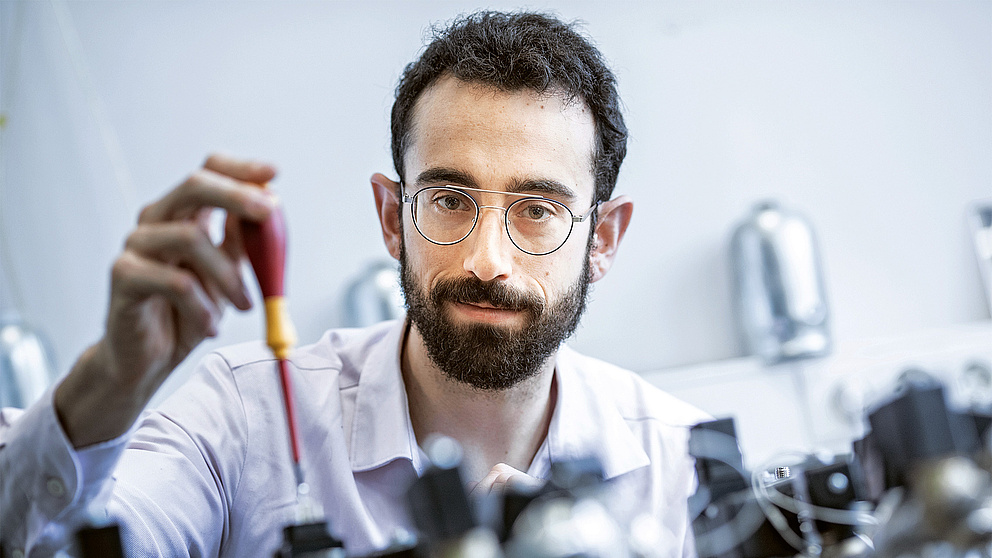
Voyages of discovery, outer space and biology already fascinated the 31-year-old when he was still a boy. He often went camping with his parents in the wilderness. On clear nights, his father explained the stars to his son. “I asked myself whether there was life on the other planets, too, and decided to try and find out.” But Verseux soon realised how difficult it is to become an astronaut. So, he studied biology to get to the bottom of the life aspect of the issue.
Verseux specialised in astrobiology, which is the study of the conditions and possible forms of life in space. His doctorate contributed to the BIOMEX experiment: between 2014 and 2016 on board the International Space Station ISS, hundreds of samples of various bacteria, algae, lichens and fungi were subjected to the conditions present in space and on Mars. Amongst the most robust microorganisms were the bacteria Verseux was studying: cyanobacteria, whose Anabaena genus is now swimming around in the Atmos vessels in Bremen.
Cyanobacteria are most commonly known as bluegreen algae that have a proclivity to cause lake ecosystems to collapse in summer. Various toxins accrue during their metabolism. If the concentration of blue-green algae is too extreme, they kill the life of the lake. But the substances can be used constructively, as active agents for drugs, for instance. They contain proteins and vitamins, and because they draw other nutrients from the soil and release them again, they could be used on Mars as a substrate for cultivating crops. And that’s not all: cyanobacteria also carry out photosynthesis. They bind carbon dioxide from the air and produce oxygen instead. On Mars, this ability will be worth its weight in gold because oxygen, which is crucial for fuels and air to breathe, is extremely rare there. The air is largely composed of carbon dioxide and, to a lesser extent, nitrogen.
Great new hope: blue-green algae
So, cyanobacteria are space travel’s great new hope. And Verseux’ experiments underpin it. “It was clear that we could cultivate cyanobacteria with the substances that will be available on Mars. But now we know that it’s all much easier than we thought! We only have to change the atmospheric conditions on Mars a little bit for the culture to thrive.” In the Atmos reactor in Bremen, researchers can change the pressure, temperature, light and composition of the air at will and then test the bacterial content. “We are looking for the best compromise between the preconditions of the Mars atmosphere and the ones that make the bacteria grow best,” says Verseux. All you need to do is increase the pressure and slightly adapt the ratio of nitrogen to carbon dioxide. All in all, it’s no more trouble than it would be in a greenhouse on Earth.
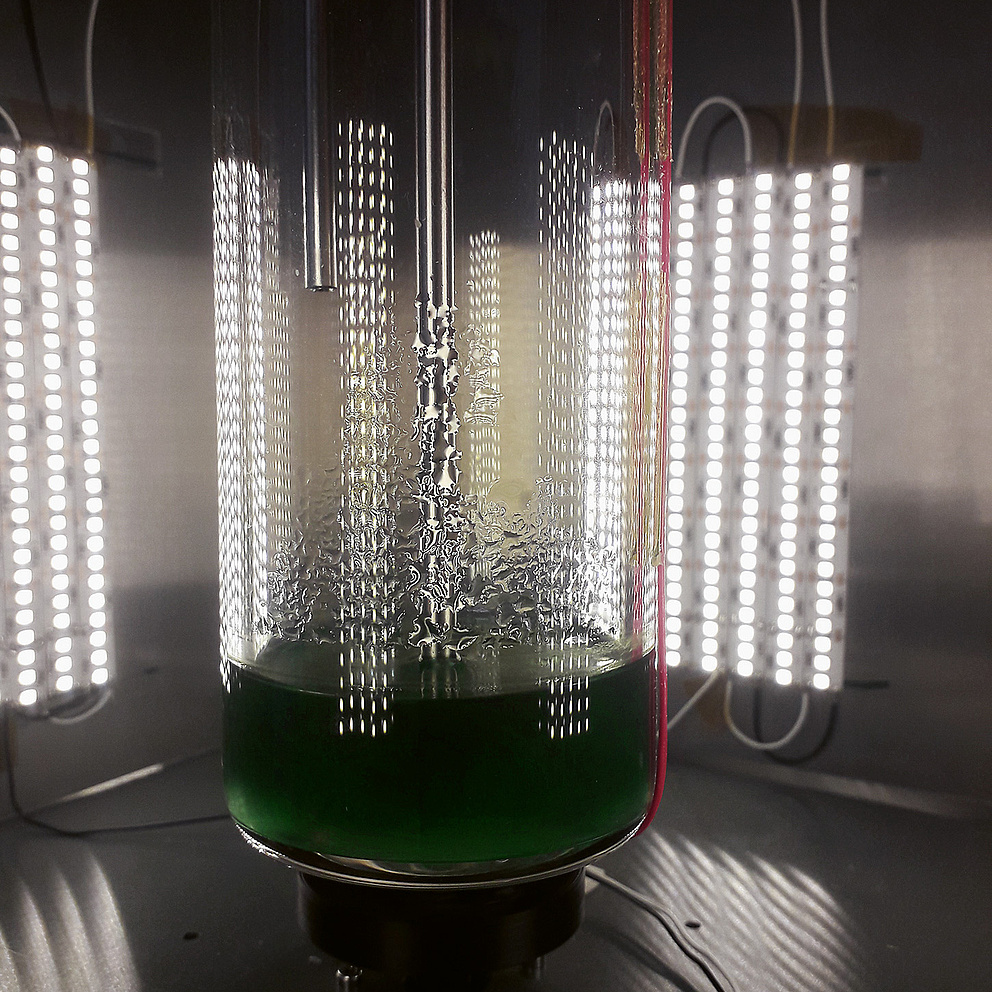
But this is not enough for Verseux. He now wants to use cyanobacteria to develop a bioregenerative life-support system. “I want to create something that works on the spot and not just in theory,” he says. But how should he acquire a realistic picture of the conditions on Mars while sitting comfortably in a well-equipped laboratory? “If I’m going to construct systems that function for astronauts on Mars, I have to know what it is like to live there.”
Verseux tries to acquire this knowledge in the most direct way possible: whilst still working on his doctorate, he applied to take part in NASA’s Mars simulation project HI-SEAS on Hawaii. From August 2015, he spent a whole year with five other researchers in an area of about 100 square metres in a roughly six-metre-high white dome with a diameter of some 12 metres, at a height of 2,500 metres, completely cut off in the middle of the barren volcanic landscape of Mauna Kea. “We tested all the aspects of a Mars mission – including the time lag in telecommunications.” A radio signal from Mars to Earth takes between four and 24 minutes because, depending on the planet’s position, it has to cover a distance ranging from 55 million to 400 million kilometres. The HI-SEAS participants constantly had to deal with a signal delay of 20 minutes.
Every test tube is a valuable treasure because you can't replace it if it breaks.
One of the questions addressed by the simulation was how a crew would manage without additional supplies. “Every test tube is a valuable treasure because you can’t replace it if it breaks,” says Verseux. Above all, however, HI-SEAS was designed to test the psychological dynamics in such an isolated group. How can you live in harmony and stop conflicts from escalating? Consequently, psychological state and compatibility were just as important in selecting the crew as their specialist qualifications.
At the beginning he was a bit the “absent-minded professor”
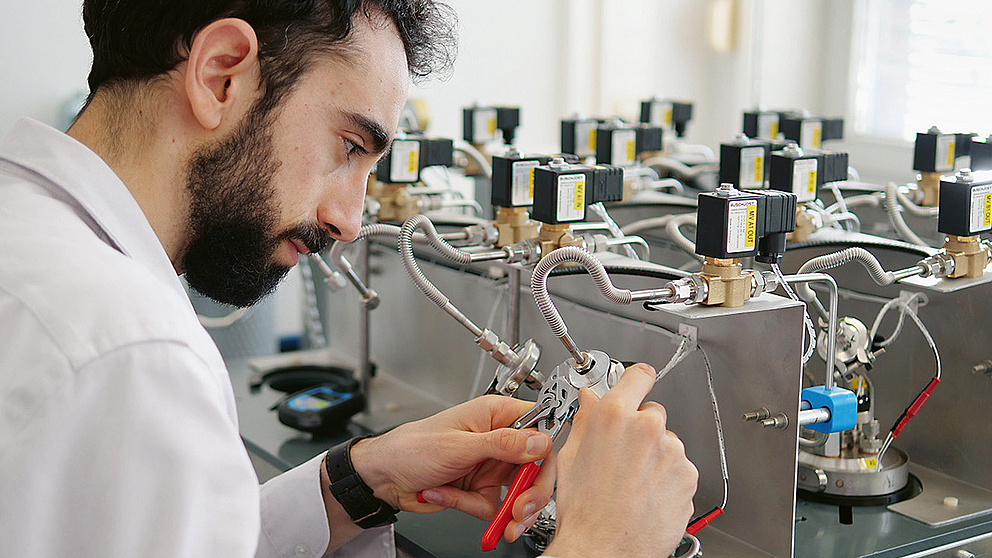
And what about Verseux? “He’s a really nice guy, you can get on with him on a long-term basis,” says Christiane Heinicke who develops living and working modules for Mars missions at ZARM. She took part in HI-SEAS together with Verseux. What she found particularly special about him were his focus and organisational skills. “At the beginning he was a bit ‘the absent-minded professor’: when he got his teeth into a problem, he didn’t budge until he had solved it.” As time went by, he himself realised that a daily routine, sufficient sleep and time for relaxation were important if you wanted to go on being productive, Verseux explains. “And he sticks to that,” says his colleague Heinicke.
Would I join the mission? Like a shot!
In 2018, Cyprien Verseux had another opportunity to practise being productive under extreme conditions: He spent a year at the French-Italian Concordia Research Station in the middle of the Antarctic, which space agencies also use for their research. The life challenges at the station are similar to those during a long-term mission in space. “For several hundred kilometres round about Concordia you will not encounter a single person, not a single plant,” Verseux says. “In the winter, when it’s dark for months on end, the temperature outside drops to below minus 80 degrees Celsius with an icy wind. For weeks, you are holed up with a dozen people at extremely close quarters. You really do feel as though you are on another planet.”
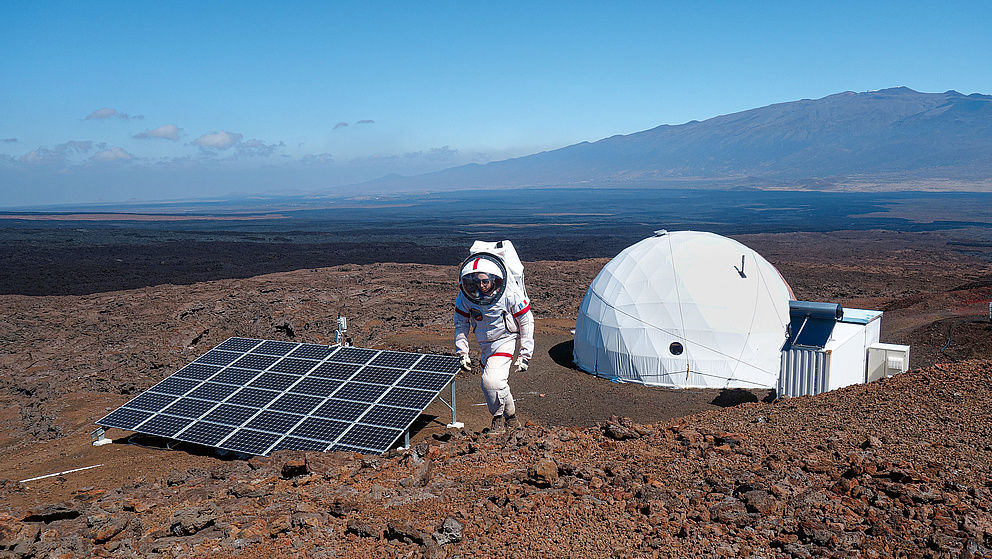
This mission also taught Verseux more about mental hygiene: “When you’re so isolated, it really is important to plan well – including time for relaxation so that you get enough of it. During these phases, I read, worked on my book about the experiment and learned a new instrument – the ukulele.”
Will he ever be able to use his experience for the real thing? If NASA does manage to set off for Mars as planned, Verseux will be in his late forties – an ideal age for astronauts. And there will certainly be an astrobiologist on board. Would he join the mission? “Like a shot!” answers Verseux without hesitation. Does he have no fear? After all, the journey would last two and a half years: six months out, 18 months on a planet that, despite all our research, we know very little about, and six months back, six months back. Respect, yes, fear, no, he says. Journeys of discovery had always been risky, but they had been crucial in taking humanity forward. “It’s a risk worth taking.”

